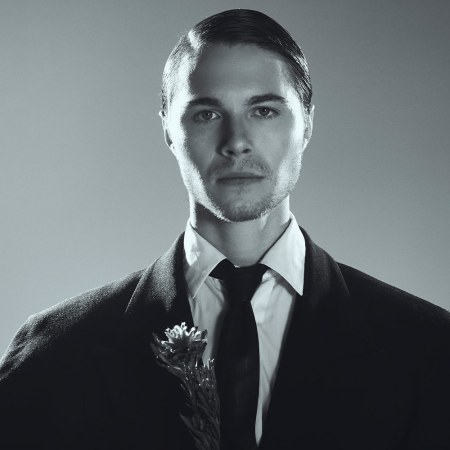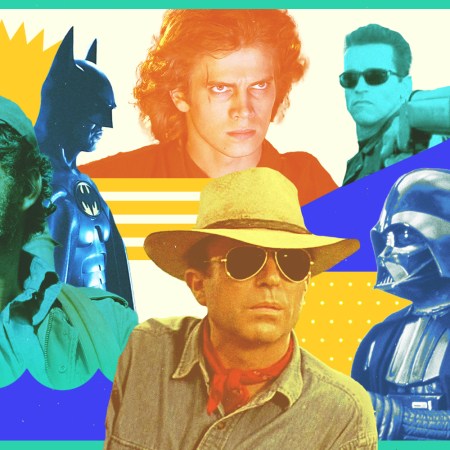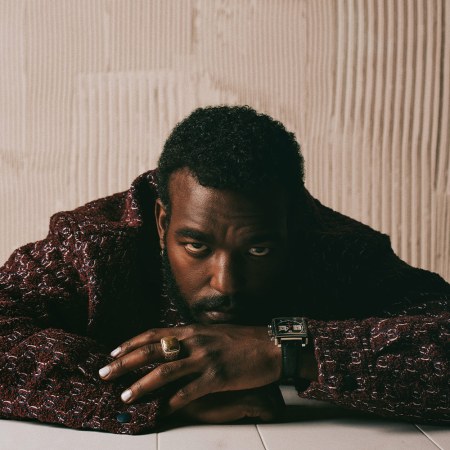I missed Avatar: The Last Airbender when it first aired from 2005 to 2008. I’m not entirely sure why. My siblings and I were the target audience, as grade-schoolers who’d recently graduated from PBS’s Arthur, Dragon Tales and Cyberchase to the more intricate and (to us, at least) raunchier plot lines of Disney and Nickelodeon: Jimmy Neutron, The Fairly OddParents, Drake & Josh, The Suite Life of Zack & Cody, That’s So Raven.
But for whatever reason, Nickelodeon’s Avatar didn’t make it into our house. Maybe we just had enough shows, especially after DVRs came into vogue in the mid-aughts. Television was paradoxical at the time: it felt finite compared to the streaming era, yet our content of choice tended to arrive in sprawling, 20-episode batches. And while we were always voracious for more, our little-person schedules were busy and stubborn, keeping a natural cap on our consumption.
The first time I watched Avatar was this winter, with my girlfriend, Xanthe, who was watching it for the second time. (She didn’t miss the show the first time it came around, despite growing up in Sydney, Australia. Go figure.) We didn’t choose the show at random; as with countless other once-successful animations, Avatar was recently reimagined as a live-action series, which made landfall on Netflix in 2024. After trying out the remake on her own time, Xanthe felt unsatisfied and nostalgic; the experience had triggered a siren song for the real thing, which also happens to be on Netflix.
It was added in May 2020, less than two months into the pandemic, and enough quarantining households gave it a pass that The New Yorker wrote a brief response essay in July of that year, dubbing the renaissance “a stunning second life,” and contrasting the show’s pitch-perfect finale (“A fantasy series that knew what it wanted to be from the beginning”) to that of Game of Thrones, which had landed with a thud the previous summer.
We pressed play on Avatar four years later, without any real intention or schedule; and personally, I began the show without much expectation. I was happy that it seemed to make Xanthe happy — she accommodates baseball’s omnipresence in our living room, despite barely caring for even cricket in her youth — and I really enjoyed the first few episodes.
But at some point, perhaps by midway through the first season, we found ourselves hooked on the characters, swept up in the relentless plot, gleefully marooned on an island of our own making. In some ways, this is typical of the wizardry that governs our relationship with OTT media. At any time, you can have an experience on your own (or with a fellow watcher), separate from any release or conversation, untethered from any explicit pop culture moment. TV was once finite; now we’re all living infinite, parallel realities in relation to it. More often than not, this doesn’t feel like a superpower. It gives me task paralysis.
But sometimes, when you reach into the vault and take a chance and that experience is good — transportive, well-written, thought-provoking, gorgeous as it dances across the screen — you almost can’t believe your luck. This show, written and wrapped up before I ever had a high school locker, 61 episodes strong, was just sitting there, unruffled by time. By the final episode, I was certain: its quality might be an affront to our time.

First, a bit of potentially necessary housekeeping: Avatar: The Last Airbender has nothing to do with James Cameron’s Avatar franchise. Their similarities end with the shared name. The fragment after the colon was added once the former’s creators (Michael Dante DiMartino and Bryan Konietzko) discovered, in 2004, that Cameron already had the rights to a project called Avatar. (His movie ended up hitting theaters in 2009.)
Nickelodeon Animation Studios’ Avatar takes place in an Asiatic-inspired world, comprised of four known nations: the Water Tribe, the Earth Kingdom, the Fire Nation and the Air Nomads. Each nation has its share of “benders,” people capable of telekinetically summoning their nation’s element for various means — to build things, to travel great distances, to have fun. Bending, of course, can also be manipulated to wage war.
In every generation, there is a single Avatar responsible for maintaining balance and peace between the four nations. Only they are capable of learning all four elements; and they’re expected to wield this power gently and masterfully, in support of all living things…and spirits, too. (Avatars are capable of entering the planet’s spirit world.) The Avatar distinction cycles between the four nations: Water, then Earth, then Fire, then Air, and back to the beginning.
“The Boy and the Heron,” Hayao Miyazaki’s Final Film, Is a Profound Tale of Loss
The “Spirited Away” director’s latest made its debut at the Toronto International Film Festival this weekendNaturally, the Avatar in Avatar: The Last Airbender is not a wizened, well-trained adult overseeing decades of predictable harmony. He’s a coltish, uncertain 12-year-old kid named Aang, who’s privy to just one element in the pilot: Air. Aang hails from the Southern Air Temple, and sports the electric blue arrow tattoos and orange robes of his legion’s monks. But the show begins, oddly enough, with him trapped in a cocoon of ice, deep underwater, sleeping alongside a fluffy, flying bison named Appa.
As the opening bundle of episodes reveals in quick succession: Aang has been suspended in the ice for 100 years, having narrowly and unwittingly escaped the Fire Nation’s genocide of the Air Nomads. Right before their ambush, Aang had “run away from home” (flying away on the back of Appa) in rejection of his new destiny; as the Avatar, he’d learned, he wouldn’t be able to play with his friends anymore and would have to start training in earnest.
Caught in a storm, at the advent of world war, Aang manages to save himself and Appa. But in doing so, he dooms the world to a century-long subjugation at the hands of the Fire Nation. And during his Rip Van Winkle snooze, misery proliferates: the Avatar has abandoned us, most commoners believe. (Because Aang isn’t dead, no new Avatars appear in the subsequent generations.) It’s a startlingly inventive backstory for a children’s animated series — and one that earned the show’s creators critical comparisons to the airtight world-building and exploration of J.K. Rowling and J.R.R. Tolkien.

But the show is unique even to the familiar fantasy genre, thanks to its tender, expert blend of Japanese anime and American cartoons. In an interview with IGN in 2012, co-creator Konietzko said, “Our love for Japanese Anime, Hong Kong action and Kung Fu cinema, yoga, and Eastern philosophies led us to the initial inspiration for Avatar.” He and DiMartino were superfans of Hayao Miyazaki (the legendary creator of Studio Ghibli) and, frame after frame, it shows.
Asian influence is paramount in Avatar, manifesting in the design, architecture, nomenclature, traditions and even the score of the show’s world. It most memorably informs the various methods of bending. Each is derived from the real-life movements of a regional martial art: tai chi (waterbending); Northern Shaolin kung fu (firebending); Hung Gar, a southern Chinese offshoot of kung fu (earthbending); and Bagua, from the Wudang school, a faster form of tai chi (airbending).
At one point in the show, the characters find a priceless scroll with waterbending instructions, which clearly depicts a man practicing tai chi. This concept, which was realized thanks to a martial arts consultant (Sifu Kisu, from the Harmonious Fist Chinese Athletic Association), grounds the show in an exciting and believable physicality. Waterbenders almost dance as they create waves, turn rivers to ice or summon impromptu “lassos” from water canisters. Earthbenders stomp the ground and stand strong as they move boulders or sense intruders from miles away.
The show follows Aang’s condensed, world-roving quest to learn all four elements — a feat that usually takes the Avatar a lifetime, though Aang must master them in a single summer. (The three seasons build towards a climactic showdown, cleverly timed to a sequence of natural events — a solar eclipse, a fiery comet — which hold serious implications for the Fire Nation. You can probably guess which event makes its benders weaker, and which one makes them stronger.)
Free from the ice, Aang forms a group with Water Tribe youths Sokka (a brave, ever-hangry jokester) and Katara (his younger sister, who is equals parts fierce, caring and righteous). They catch Aang up to speed: the Fire Nation rules almost every corner of the planet and everyone assumes the Avatar dead or permanently banished from the living world. Their own village, a sort of South Pole hamlet, was once sacked by Fire Nation marauders. Their mother has been dead for years, and all the men are off fighting the never-ending war.
The show handles this exposition with aplomb; on one hand, there are gut-wrenching scenes where Aang comes to grips with the genocide of his people. Not five minutes later, though, he may be sledding with “otter penguins” or surfing with “elephant koi.” (Combining two random animals is one of the show’s most loyal bits.) This zigzagging rings true: it’s a kids’ show. But the fact that Aang himself is a kid isn’t wasted by the writers’ room; he is easily distracted, often moody in one direction or the other — though in the early seasons is usually unflappably upbeat — and his puppy love for Katara is as natural a rooting interest for viewers as his inevitable battle with Fire Lord Ozai.

While the adventures of Aang, Sokka and Katara follow a familiar “mission/monster of the week” format, the B plot — the travails of Zuko and Iroh — is unpredictable, sometimes jaw-droppingly so. Of the many arcs in the show, it’s also the most deeply moving, bringing Xanthe and me to tears on multiple occasions. (Again: we’re talking about an animated series from Nickelodeon.) Zuko is the the teenaged, excommunicated prince of the Fire Nation; after his father, the Fire Lord, punishes Zuko’s supposed insolence by attacking him in a sham duel — which leaves Zuko with his trademark, Phantom of the Opera-esque facial burn — Zuko is sent to sea with a hapless crew, on the doomed pretense of “capturing the Avatar.” If he can somehow achieve this, he’ll restore his honor and be welcomed back to the inner circle of the Fire Nation, which includes his deranged younger sister, Princess Azula.
Talented as he is at firebending, and obsessed with clearing his name, no one might have ever heard from Zuko again — if not for the company and counsel of his uncle Iroh. Older brother to the Fire Lord, once the true heir to the Fire Nation throne and now similarly excommunicated under vague circumstances, Iroh is a fat, old once-upon-a-time general, who spends his days drinking tea, thinking about tea and issuing unsolicited aphorisms to his hormonal nephew: “Pride is not the opposite of shame, but its source. True humility is the only antidote to shame.”
For much of this show, Zuko disregards his uncle. He berates him, breathes (literal) fire when he speaks. He walks away shaking his head after the latest mumbo jumbo: “Crazy old man.” All Zuko wants is to capture the Avatar, a Herculean task that has bedeviled the Fire Nation going back a century. Iroh is of little use to him on this journey. Week after week, Zuko gets tantalizingly close — and this gives the story its true motor. Not only are Aang, Sokka and Katara bouncing around the world, meeting people, experimenting with the elements and narrowly saving the day; they’re constantly a half-step ahead of Zuko and Iroh (ever cheerful and unhelpful), who chase their troupe the world over.
It’s when these losses pile up, and Zuko loses whatever grip on himself that he has left, that Iroh starts to look up from his tea and beg Zuko to look inward: “It’s time for you to begin asking yourself the big questions. Who are you? And what do you want?” The role of Iroh is voiced by a legendary Japanese-American voice actor named Mako, who survived World War II and, a few years after its end, moved to California as a 15-year-old.
I was less than shocked to discover that Mako was once nominated for an Academy Award, for his role in the 1966 film The Sand Pebbles. Of all the acting on Avatar, his is the most memorable: mostly patient, often comedic, once in a while absolutely blistering. Iroh mumbles, he chides, he sings. His presence on the screen is as comforting as that of Appa, Aang’s bison companion. But Appa, at least, is gentle and pure. He’s been with Aang from the beginning. What to make of Iroh’s characterization, though? The former agent of an international aggressor, a man who regularly refers back to his fall at Ba Sing Se (the fortress capital of the Earth Kingdom), which he tried, and failed, to sack and conquer?

Avatar doesn’t really know. It says: Well, what do you think? Time and time again, the show asks the big questions. It depicts the allure of war, the maw of climate crises and the ease of tribalism in unflinching terms. (The show won a Peabody: should I have mentioned that earlier?) Its characters fixate on revenge, they wrestle with free will, they miss their mothers. It’s commonplace to meet a new character and learn an astonishing detail about their life in just 24 minutes. Sometimes you’re introduced to an entire village. This is a corrupted world, but also often a quiet one, still capable of beauty — and our characters, even the ones who need a longer arc to get there, do their best to work towards the latter.
I can’t possibly write about every little delight of Avatar, nor should I (e.g., Aang, Sokka and Katara add a friend to their group, unnamed in this article, who is the funniest character on the entire show). The streaming era’s primary potency is often attributed to the binge — but in reality, it’s the time-capsulization of its content. The “watch it when you’re ready” factor. Discovery whenever. Imagine pirates, a mad king, a tree-canopy revolutionary leading a band of face-painted juveniles. Sojourns to the spirit world, asides to swamps and prisons. A man yelling “Not my cabbages!” anytime trouble tumbles through town. If you haven’t seen Avatar yet, its spoilers and secrets shouldn’t be public domain; I hope I’ve managed to keep them out of this essay.
Still, know that for all its metaphysical pondering and mythological canon, this is a human story — a kids’ show, of the sort I hope they might consider making again. Full of anguish and hope and fart jokes. Watching it this year, something occurred to me. I’d assumed, because I was watching this as an adult, that it was better this way — I’m now equipped with the faculties to really understand it, to catch every butterfly of stakes and nuance in my mental net. But this show’s butterflies are better chased than collected.
Even at my age, I can tell, Avatar will continue to confuse, startle and move me for years. Until one day in the future, perhaps with kids, probably earlier, that I’ll be ready to watch a boy and his bison emerge from the ice once again. Perhaps over a cup of hot tea.
The Charge will help you move better, think clearer and stay in the game longer. Subscribe to our wellness newsletter today.


























